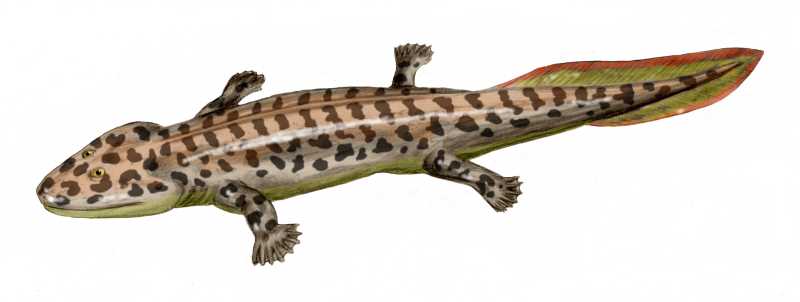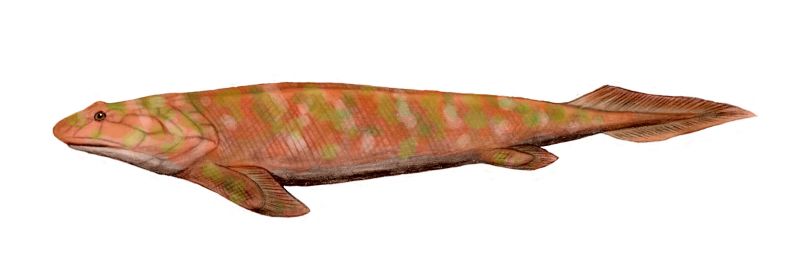|
Blue Beach
Blue Beach is a stretch of cliff-bordered coastline at Avonport, Nova Scotia near the mouth of the along the Avon River in the southern bight of Minas Basin, Kings County, Nova Scotia, Canada. It is best known as a globally significant fossil location for Lagerstätte of the Tournaisian Stage (Lower Carboniferous) period. Geographic setting Blue Beach is informally named. The name relates to the bluish-black colour of the cliffs. It stretches from a small creek to Avonport Station. The tidal range in this part of Minas Basin may be as high as . The nearest town is Hantsport, approximately to the south. The beach is accessible on foot from the end of the Blue Beach Road or from Avonport Station. There is a small private museum near the parking lot before the trail to the beach. It contains numerous excellent and important examples of fossils from the beach. The tides make for dangerous conditions because visitors can find themselves trapped. Visitors should familiarize themsel ... [...More Info...] [...Related Items...] OR: [Wikipedia] [Google] [Baidu] |
Avonport, Nova Scotia
Avonport is a community in the province of Nova Scotia, Canada, located in Kings County between the mouths of the Avon River and the Gaspereau River. Early settlers included the Fillis and Reid families. It was part of the Horton Township settlement and was known as Horton Point until its name was changed to Avonport in 1864.C. Bruce Fergusson, "Avonport" ''Place-Names and Places of Nova Scotia'' Nova Scotia Archives (1967), p. 25-26. The arrived in 1869 stimulating a number export industries including apple warehouses and a brickyard, later to become Shaw Bricks. In 1911, Minnie Brooks became one of the first female station master ... [...More Info...] [...Related Items...] OR: [Wikipedia] [Google] [Baidu] |
Elonichthys
''Elonichthys'' is an extinct genus of prehistoric bony fish. The genus is represented by several species from Carboniferous and Permian of Europe, Greenland, South Africa, and North America. Species See also * Prehistoric fish The evolution of fish began about 530 million years ago during the Cambrian explosion. It was during this time that the early chordates developed the skull and the vertebral column, leading to the first craniates and vertebrates. The first fis ... * List of prehistoric bony fish References Carboniferous bony fish Permian bony fish Mississippian fish Mississippian fish of North America Carboniferous fish of Europe Permian fish of Europe Permian fish of North America {{paleo-rayfinned-fish-stub ... [...More Info...] [...Related Items...] OR: [Wikipedia] [Google] [Baidu] |
Embolomeri
Embolomeri is an order of tetrapods or stem-tetrapods, possibly members of Reptiliomorpha. Embolomeres first evolved in the Early Carboniferous ( Mississippian) Period and were the largest and most successful predatory tetrapods of the Late Carboniferous ( Pennsylvanian) Period. They were specialized semiaquatic predators with long bodies for eel-like undulatory swimming. Embolomeres are characterized by their vertebral centra, which are formed by two cylindrical segments, the pleurocentrum at the rear and intercentrum at the front. These segments are equal in size. Most other tetrapods have pleurocentra and intercentra which are drastically different in size and shape. Embolomeres were among the earliest large carnivorous tetrapods, with members such as the crocodilian-like ''Proterogyrinus'' appearing in the Visean stage of the Carboniferous. They declined in diversity during the Permian period, though at least one representative ('' Archeria)'' was common in the Early Permian ... [...More Info...] [...Related Items...] OR: [Wikipedia] [Google] [Baidu] |
Whatcheeriidae
Whatcheeriidae is an extinct family of tetrapods which lived in the Mississippian sub-period, a subdivision of the Carboniferous period. It contains the genera ''Pederpes'', '' Whatcheeria'', and possibly '' Ossinodus''. Fossils of a possible whatcheeriid have been found from the Red Hill locality of Pennsylvania. If these remains are from a whatcheeriid, they extend the range of the family into the Late Devonian and suggest that advanced tetrapods may have lived alongside primitive tetrapod ancestors like ''Hynerpeton'' and ''Densignathus''. They also imply that a very long ghost lineage of whatcheeriids lived through Romer's gap, a period during the Early Carboniferous conspicuously lacking in tetrapod remains. Classification Currently, using modern cladistic taxonomy, Whatcheeriidae is not placed in Amphibia Amphibians are four-limbed and ectothermic vertebrates of the class Amphibia. All living amphibians belong to the group Lissamphibia. They inhabit a wide va ... [...More Info...] [...Related Items...] OR: [Wikipedia] [Google] [Baidu] |
Tulerpeton
''Tulerpeton'' is an extinct genus of Devonian four-limbed vertebrate, known from a fossil that was found in the Tula Region of Russia at a site named Andreyevka. This genus and the closely related ''Acanthostega'' and ''Ichthyostega'' represent the earliest tetrapods. Description ''Tulerpeton'' is considered one of the first "tetrapods" (in the broad sense of the word) to have evolved. It is known from a fragmented skull, the left side of the pectoral girdle, and the entire right forelimb and right hindlimb along with a few belly scales. This species is differentiated from the less derived "aquatic tetrapods" (such as ''Acanthostega'' and ''Ichthyostega'') by a strengthened limb structure. These limbs consist of 6 toes and fingers. Additionally, its limbs appear to have evolved for powerful paddling rather than walking. The fossil fragments also indicate that its head was disconnected from the pectoral girdle. From the absence of the rough postbranchial lamina of the pectoral gi ... [...More Info...] [...Related Items...] OR: [Wikipedia] [Google] [Baidu] |
Ichthyostegidae
''Ichthyostega'' (from el, ἰχθῦς , 'fish' and el, στέγη , 'roof') is an extinct genus of limbed tetrapodomorphs from the Late Devonian of Greenland. It was among the earliest four-limbed vertebrates in the fossil record, and was one of the first with weight-bearing adaptations for terrestrial locomotion. ''Ichthyostega'' possessed lungs and limbs that helped it navigate through shallow water in swamps. Although ''Ichthyostega'' is often labelled a 'tetrapod' due to the possession of limbs and fingers, it evolved long before true crown group tetrapods, and could more accurately be referred to as a stegocephalian or stem tetrapod. Likewise, while undoubtedly of amphibian build and habit, it is not considered a true member of the group in the narrow sense, as the first modern amphibians (members of the group Lissamphibia) appeared in the Triassic Period. Until finds of other early stegocephalians and closely related fishes in the late 20th century, ''Ichthyostega'' stoo ... [...More Info...] [...Related Items...] OR: [Wikipedia] [Google] [Baidu] |
Acanthostega
''Acanthostega'' (meaning "spiny roof") is an extinct genus of stem-tetrapod, among the first vertebrate animals to have recognizable limbs. It appeared in the late Devonian period (Famennian age) about 365 million years ago, and was anatomically intermediate between lobe-finned fishes and those that were fully capable of coming onto land. Description  The ''Acanthostega'' Polydactyly in stem-tetrapods, had eight digits on each han ...
The ''Acanthostega'' Polydactyly in stem-tetrapods, had eight digits on each han ...
[...More Info...] [...Related Items...] OR: [Wikipedia] [Google] [Baidu] |
Bothriolepis
''Bothriolepis'' (from el, βόθρος , 'trench' and el, λεπίς 'scale') was a widespread, abundant and diverse genus of antiarch placoderms that lived during the Middle Devonian, Middle to Late Devonian period of the Paleozoic Era. Historically, ''Bothriolepis'' resided in an array of paleo-environments spread across every paleocontinent, including near shore marine and freshwater settings. Most species of ''Bothriolepis'' were characterized as relatively small, benthic, freshwater detritivores (organisms that obtain nutrients by consuming decomposing plant/animal material), averaging around in length. However, the largest species, ''B. rex'', had an estimated bodylength of . Although expansive with over 60 species found worldwide, comparatively ''Bothriolepis'' is not unusually more diverse than most modern bottom dwelling species around today. Classification ''Bothriolepis'' is a genus placed within the placoderm order Antiarchi. The earliest antiarch placoderms fir ... [...More Info...] [...Related Items...] OR: [Wikipedia] [Google] [Baidu] |
Acanthodii
Acanthodii or acanthodians is an extinct class of gnathostomes (jawed fishes), typically considered a paraphyletic group. They are currently considered to represent a grade of various fish lineages leading up to the extant Chondrichthyes, which includes living sharks, rays, and chimaeras. Acanthodians possess a mosaic of features shared with both osteichthyans (bony fish) and chondrichthyans (cartilaginous fish). In general body shape, they were similar to modern sharks, but their epidermis was covered with tiny rhomboid platelets like the scales of holosteians (gars, bowfins). A lower Silurian species, ''Fanjingshania renovata'', attributed to Climatiiformes is the oldest chondrichthyan with known anatomical features. The popular name "spiny sharks" is because they were superficially shark-shaped, with a streamlined body, paired fins, a strongly upturned tail, and stout, largely immovable bony spines supporting all the fins except the tail—hence, "spiny sharks". However, ... [...More Info...] [...Related Items...] OR: [Wikipedia] [Google] [Baidu] |
Gyracanthus
''Gyracanthus'' (from el, γύρος , 'curved' and el, ἄκανθα , 'spine') is an extinct genus of acanthodian Acanthodii or acanthodians is an extinct class of gnathostomes (jawed fishes), typically considered a paraphyletic group. They are currently considered to represent a grade of various fish lineages leading up to the extant Chondrichthyes, which ....Snyder, D., Turner, S., Burrow, C. J., & Daeschler, E. B. (2017). “Gyracanthus” sherwoodi (Gnathostomata, Gyracanthidae) from the Late Devonian of North America. Proceedings of the Academy of Natural Sciences of Philadelphia, 165(1), 195-219. See also * List of acanthodians References Devonian fish of Africa Carboniferous fish of Europe Devonian fish of North America Devonian fish of South America Carboniferous fish of North America Acanthodii genera Carboniferous acanthodians Devonian acanthodians Taxa named by Louis Agassiz {{Carboniferous-animal-stub ... [...More Info...] [...Related Items...] OR: [Wikipedia] [Google] [Baidu] |
Gyracanthides
''Gyracanthides'' is an extinct genus of acanthodian gnathostome, known from Devonian to Early Carboniferous. Description ''Gyracanthides'' is large acanthodian, ''G. murrayi'' reached the length up to . The pectoral fin spines are large compared to its body, for specimen that have estimated to be had pectoral fin spines around long. A recent study suggested that ''Gyracanthides'' is closely related to chondrichthyans (as currently delimited), and that acanthodians Acanthodii or acanthodians is an extinct class of gnathostomes (jawed fishes), typically considered a paraphyletic group. They are currently considered to represent a grade of various fish lineages leading up to the extant Chondrichthyes, which ... are paraphyletic. References Acanthodii genera Carboniferous acanthodians {{carboniferous-animal-stub ... [...More Info...] [...Related Items...] OR: [Wikipedia] [Google] [Baidu] |
Ctenodus
''Ctenodus'' (from el, κτείς , 'comb' and el, ὀδούς 'tooth') is an extinct genus of prehistoric lungfish and the longest-surviving genus of Carboniferous The Carboniferous ( ) is a geologic period and system of the Paleozoic that spans 60 million years from the end of the Devonian Period million years ago ( Mya), to the beginning of the Permian Period, million years ago. The name ''Carbonifero ... lungfish. References Prehistoric lungfish genera Carboniferous bony fish Taxa named by Louis Agassiz {{paleo-lobefinned-fish-stub ... [...More Info...] [...Related Items...] OR: [Wikipedia] [Google] [Baidu] |




